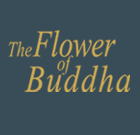| catalogue | press review | credits |
 |
| Foreword |
| The Metaphor City |
| Silk
and Metal Carpets from the Qing Dynasty |
| The
Wings of the Phoenixes |
| Bibliography |
|
| FOREWORD This catalogue introduces one of the most precious collections of Chinese carpets in existence: the Silk and Metal Carpets made during the Qing dynasty (1644-1911), and in particular those dating from the beginning of the Qianlong period (1735-1796) until the brief reign of the last Xuantong emperor (1908-1911). In the catalogue, the presentation of these carpets is preceded, according to classical Chinese composition, by an essay about the Forbidden City, for which they were destined, and by a fantastic tale. The Qing, who were of Manchu origin, were followers of shamanic as well as Tibetan Buddhist rites, and desired to surround themselves at court by the images and symbols that they cherished. The design of the carpets therefore reflects a precise cosmological scheme: the diagram of the five elements; fire, water, earth, wood and metal, represented by either botanical or animal images which indicate at the same time the four cardinal points and the center showing the Middle Kingdom. The material used in these carpets was silk, the very essence of China. In rarer pieces, gold, silver and copper were inserted, three metals to which therapeutic virtues were attributed. To a certain extent, there is a correlation existing between the
esthetic grammar and the principles of Chinese textile art, and
those belonging to poetry. The three models of expression that are
inherent in the art of composition: fu, exposition, bi, comparison,
and xing, evocation, are the very same models used by the master
weavers in carrying out their creations. Aside from beauty itself, which constitutes an essential element
in the significance of the work, the imperial Silk and Metal carpet
represents an object of faith and veneration, even as it is not
a work of strictly religious art. According to some traditions, the Great Mother goddess in her emergence from the sea, assumes the semblance of the lotus flower. A lotus flower that opens out upon the surface of the water is the symbol of the first manifestation of the supreme being; it is the gateway to the womb of the universe, which is represented as a thousand-petalled golden flower. In Hindu tradition, it is the lotus flower which opens to give birth to Brahma, the Creator. Taoism, in an initiatory text where the way to the immortality of body and soul is taught to the believer, associates the Golden Flower with the elixir of long life. The different varieties of the lotus flower symbolize for the Buddhist different spiritual states. The white lotus is the image of the state of absolute mental purity and of the spiritual perfectness of Buddha. Its eight petals indicate the eight points along the path of the doctrine. The pink lotus is representative of Buddha, and among the esoteric sects it is reserved for the highest expression of the divinities. The red lotus stands for the great compassion of Buddha, as well as of the bodhisattva for all living beings. The blue lotus is never represented in full bloom, in view of the fact that its center is not visible, as is true of the supreme intelligence. In yoga the levels which must be overcome in order to reach nirvana
are indicated by lotus flowers which vary in color and petals and
which are arranged along a central axis, above them the supreme
white lotus with its thousand petals which contain all the sounds
and all the forces of the universe; existence in its state of perfect
purity, of light which is infinite, immutable and formless; the
site of nirvana, the state of abolition of all passion and desire,
for those who have achieved the status of perfect beatitude, freeing
themselves from the bonds of samsara, from the succession of birth
and rebirth. A carpet bearing the lotus flower motif becomes in itself a transcendent
vehicle between earth and heaven: the meditation carpets in the
monasteries of Tibet, the flying carpets of oriental fables, the
imperial carpets of The Forbidden City, in the knots that compose
them, they reaffirm the sacred bond existing between man and nature. |
